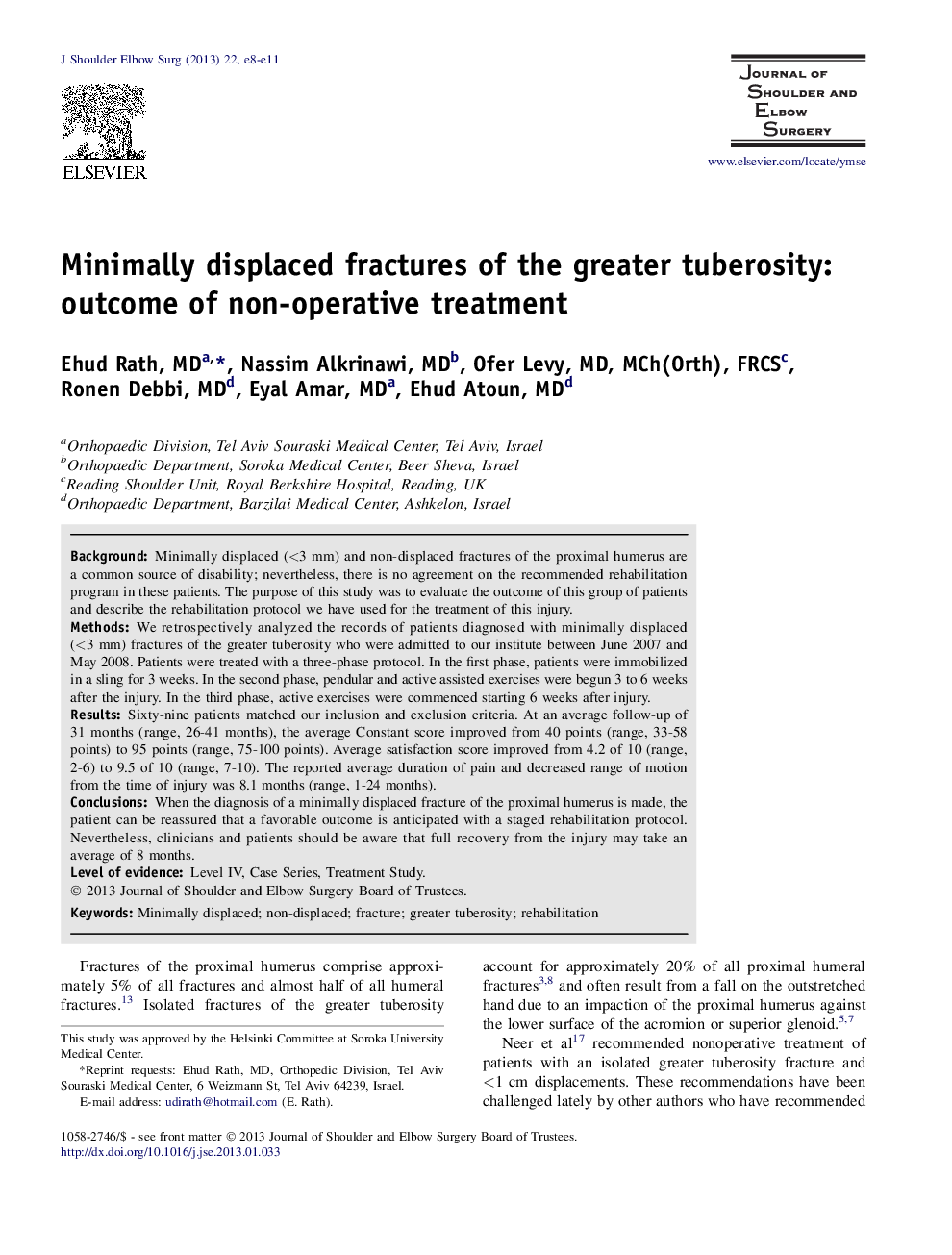| Article ID | Journal | Published Year | Pages | File Type |
|---|---|---|---|---|
| 4074028 | Journal of Shoulder and Elbow Surgery | 2013 | 4 Pages |
BackgroundMinimally displaced (<3 mm) and non-displaced fractures of the proximal humerus are a common source of disability; nevertheless, there is no agreement on the recommended rehabilitation program in these patients. The purpose of this study was to evaluate the outcome of this group of patients and describe the rehabilitation protocol we have used for the treatment of this injury.MethodsWe retrospectively analyzed the records of patients diagnosed with minimally displaced (<3 mm) fractures of the greater tuberosity who were admitted to our institute between June 2007 and May 2008. Patients were treated with a three-phase protocol. In the first phase, patients were immobilized in a sling for 3 weeks. In the second phase, pendular and active assisted exercises were begun 3 to 6 weeks after the injury. In the third phase, active exercises were commenced starting 6 weeks after injury.ResultsSixty-nine patients matched our inclusion and exclusion criteria. At an average follow-up of 31 months (range, 26-41 months), the average Constant score improved from 40 points (range, 33-58 points) to 95 points (range, 75-100 points). Average satisfaction score improved from 4.2 of 10 (range, 2-6) to 9.5 of 10 (range, 7-10). The reported average duration of pain and decreased range of motion from the time of injury was 8.1 months (range, 1-24 months).ConclusionsWhen the diagnosis of a minimally displaced fracture of the proximal humerus is made, the patient can be reassured that a favorable outcome is anticipated with a staged rehabilitation protocol. Nevertheless, clinicians and patients should be aware that full recovery from the injury may take an average of 8 months.
